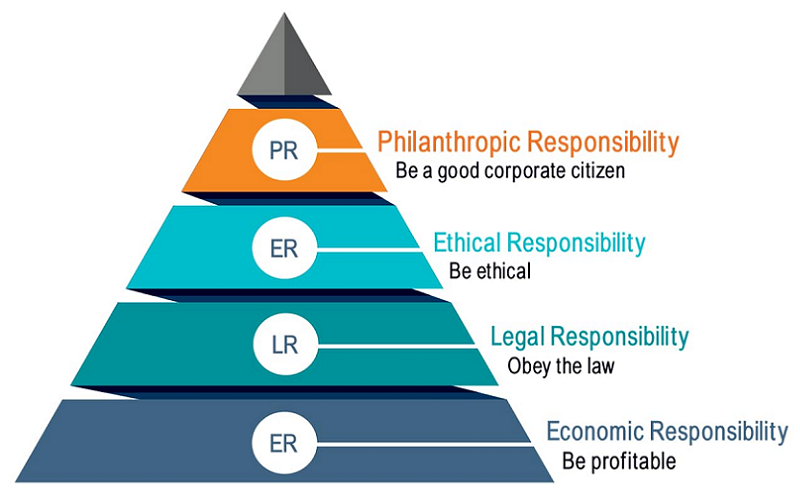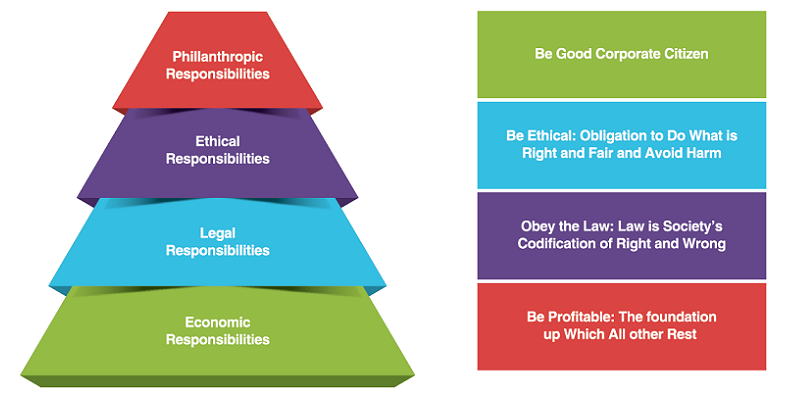
In the ever-evolving world of business, C-Corporations, or C-Corps, play an integral role. These entities, while primarily focused on profit generation, are now increasingly expected to make positive contributions to society. This expectation stems from a concept known as Corporate Social Responsibility (CSR). CSR is no longer an optional add-on for businesses but a necessity that shapes their core operations and strategy. Here we explore the historical development of CSR, examine its importance and benefits, and provide a practical guide on how C-Corporations can implement effective CSR strategies.
Contents
Introduction to Corporate Social Responsibility (CSR) and C-Corporations
In an increasingly globalized world, businesses can no longer operate in a vacuum. It’s essential for them to recognize and respond to a range of societal and environmental issues. At the heart of this shift is a concept known as Corporate Social Responsibility (CSR), a framework that encourages businesses to behave ethically, contribute to economic development, and improve the quality of life for their workforce, their families, the local community, and society at large. CSR, initially considered a sideline activity, has gradually become a fundamental part of the business strategy for many corporations.
Brief Description of C-Corporations
C-Corporations, often referred to as C-Corps, are the most common type of corporation in the U.S. They are legal entities separate from their owners, offering them limited liability. C-Corps can sell shares of stock, which makes them attractive for larger businesses and those seeking investment or planning to go public. Profits of C-Corporations are taxed separately from their owners, leading to what’s often referred to as “double taxation.”
Explanation of Corporate Social Responsibility
Corporate Social Responsibility (CSR) is a self-regulating business model that helps a company be socially accountable—to itself, its stakeholders, and the public. By practicing CSR, companies can be conscious of the kind of impact they are having on all aspects of society, including economic, social, and environmental. This approach encourages companies to produce an overall positive impact on society.
Importance of CSR in C-Corporations
For C-Corporations, CSR isn’t merely an added responsibility; it’s a strategic tool that can lead to numerous benefits. It can enhance their reputation, increase customer and employee satisfaction, and even boost their bottom line. CSR also assists in attracting and retaining investors as it is often seen as a proxy for good corporate governance. This concept of business self-regulation has now become an important part of corporate strategy, with the potential to drive sustainable growth and profitability [1].

Historical Background of CSR in C-Corporations
The idea of Corporate Social Responsibility (CSR) is not a new concept. While it may have been popularized in recent decades, its roots can be traced back to the early 20th century. Over the years, the concept of CSR in C-Corporations has evolved significantly.
Evolution of CSR in the Corporate World
CSR emerged as a prominent concept in the business world in the 1950s, but its genesis can be traced back to the philanthropic activities of businesses in the early 20th century. During the industrial revolution, several business magnates set up foundations to support social causes, marking the early manifestations of CSR.
The concept began to mature during the 1960s and 1970s, amidst growing public awareness about businesses’ roles in societal issues, such as environmental pollution and workers’ rights. CSR was seen as a way to counter corporate malpractices and promote ethical behavior.
During the late 20th century, the focus shifted from reactive to proactive CSR, with businesses beginning to integrate CSR activities into their business strategies. This period also saw the introduction of standards and regulations encouraging CSR, further promoting its adoption among corporations.
Key Milestones in CSR Development
Several key events and trends have influenced the development of CSR. The establishment of the United Nations Global Compact in 2000, which promotes responsible business practices in the areas of human rights, labor, environment, and anti-corruption, was a significant milestone. The Global Reporting Initiative, which promotes sustainability reporting, has also played a vital role in encouraging corporations to be more transparent about their CSR activities.
Another landmark event was the introduction of the Business Roundtable’s new statement on the purpose of a corporation in 2019. Here, 181 CEOs committed to lead their companies for the benefit of all stakeholders – customers, employees, suppliers, communities, and shareholders. This marked a shift from the traditional shareholder-centric approach to a broader stakeholder-centric approach, embedding CSR into the heart of corporate strategy [2].
CSR in C-Corporations: Historical Overview
In the context of C-Corporations, the adoption of CSR has been significantly influenced by the shifting expectations of shareholders and stakeholders alike. Early instances of CSR in C-Corps involved philanthropic activities, such as charitable donations. However, over time, these initiatives became more strategic and integrated into their core business operations.
Today, CSR is a critical aspect of many C-Corporations’ business strategies. These corporations understand that their success is linked to the well-being of the broader social and environmental systems in which they operate. From committing to carbon neutrality and investing in local communities to prioritizing diversity and inclusion, C-Corps are increasingly using CSR to create shared value for their businesses and society.

Benefits of Embracing CSR in C-Corporations
As C-Corporations venture into the practice of Corporate Social Responsibility, they often discover a wealth of benefits, both tangible and intangible. CSR can provide significant advantages, transforming the way a corporation is perceived and how it operates.
Enhanced Brand Image and Reputation
A strong commitment to CSR can greatly enhance a corporation’s brand image and reputation. In today’s conscientious business landscape, corporations are increasingly judged by their social and environmental performance in addition to their economic success. By adopting CSR, corporations can position themselves as responsible businesses, which can lead to increased trust and loyalty from customers, employees, and the public.
Increased Customer Loyalty and Satisfaction
Research has consistently shown that customers are more likely to support companies that are socially and environmentally responsible. A commitment to CSR can therefore boost customer loyalty and satisfaction. CSR initiatives that align with customer values can also differentiate a corporation from its competitors, potentially leading to increased market share [3].
Improved Employee Motivation and Retention
CSR can also have a profound impact on a corporation’s employees. Companies that actively promote CSR often report higher levels of employee engagement and motivation. CSR can help attract and retain top talent, as many employees prefer to work for companies that share their values. Moreover, CSR activities can provide employees with additional opportunities for development and leadership.
Financial Performance and Investor Relations
While the primary goal of CSR is to contribute to societal welfare, it can also have positive financial implications. Studies have shown a positive correlation between CSR and financial performance. Investors, too, are increasingly considering a company’s CSR performance when making investment decisions. Therefore, good CSR practices can make a corporation more attractive to investors.
Legal and Regulatory Advantages
Adopting CSR can also help C-Corporations comply with regulatory requirements and avoid legal issues. It can lead to better risk management, as corporations that consider the social and environmental impact of their activities are often better prepared to deal with related legal, regulatory, and reputational risks [4].

Implementing CSR in C-Corporations: Best Practices
The journey towards becoming a socially responsible corporation requires thoughtful strategy and deliberate action. It’s not just about donating money to charitable causes; it’s about embedding responsibility into the very fabric of your business operations.
Understanding Stakeholder Expectations
The first step towards implementing CSR is to understand the expectations of your stakeholders. This includes employees, customers, shareholders, suppliers, and the community in which you operate. Surveys, interviews, and focus groups can provide valuable insights into their priorities and concerns. Based on these insights, you can identify key social and environmental issues relevant to your corporation.
Developing a CSR Strategy
Once you’ve identified key CSR issues, the next step is to develop a CSR strategy. This strategy should align with your corporation’s mission, vision, and values. It should outline clear goals and objectives, roles and responsibilities, and plans for implementation. It is crucial that your CSR strategy is not a separate plan, but is integrated into your overall business strategy.
Embedding CSR in Corporate Culture
CSR should be part of your corporation’s culture and everyday operations. This involves embedding CSR into corporate policies, practices, and decision-making processes. Leadership plays a crucial role here. Leaders should demonstrate a commitment to CSR and promote ethical behavior throughout the organization.
Communicating CSR Initiatives Effectively
Transparency and communication are key elements of CSR. It’s important to effectively communicate your CSR initiatives to stakeholders. This can be done through annual CSR reports, company websites, social media, and other communication channels. Transparent reporting can help build trust and enhance your corporation’s reputation.
Measuring and Reporting CSR Performance
Finally, it’s important to measure and report on your CSR performance. This involves developing key performance indicators (KPIs) and monitoring progress against your CSR goals. Regular evaluation and reporting can help identify areas for improvement and demonstrate your corporation’s commitment to CSR to stakeholders [5].
Challenges and Solutions for CSR Implementation in C-Corporations
While the benefits of Corporate Social Responsibility are plentiful, the journey towards implementing effective CSR strategies is not without challenges. Recognizing these potential hurdles is the first step towards overcoming them.
Challenge: Lack of Awareness and Understanding
One of the main challenges for C-Corporations is a lack of awareness and understanding of CSR. This can lead to reluctance or resistance to CSR initiatives, making it difficult for a corporation to fully commit to its CSR goals.
Solution: This can be overcome by raising awareness and providing education about CSR at all levels of the corporation. Training programs, workshops, and communication campaigns can be effective ways to improve understanding and generate support for CSR initiatives.
Challenge: Difficulty Integrating CSR into Business Strategy
Another challenge is the difficulty in integrating CSR into a corporation’s business strategy. Some corporations view CSR as an add-on or a marketing tool, rather than a core part of their strategy.
Solution: It’s important to recognize that CSR should not be a separate plan, but should be integrated into the overall business strategy. Top management should play a leading role in aligning CSR initiatives with the corporation’s mission, vision, and values.
Challenge: Measuring CSR Performance
Measuring CSR performance can be complex due to the qualitative nature of some CSR outcomes. This makes it difficult to evaluate the effectiveness of CSR initiatives and can lead to skepticism about their value.
Solution: To tackle this, corporations can develop key performance indicators (KPIs) for their CSR goals. These KPIs should consider both quantitative and qualitative measures. Regular reporting and evaluation can help demonstrate the impact of CSR initiatives and drive continuous improvement.
Challenge: Balancing Stakeholder Interests
Balancing the different interests of stakeholders can be a challenge. Shareholders, employees, customers, suppliers, and the community can have diverse and sometimes conflicting expectations.
Solution: Engaging stakeholders in dialogue can help identify common ground and balance different interests. This requires open and transparent communication and a willingness to listen and adapt.
References
[1] Corporate Social Responsibility (CSR) Explained With Examples
[2] Types of Corporate Social Responsibility to Be Aware of
[3] What is corporate social responsibility (CSR)?
[4] What is CSR?
[5] What Is Corporate Social Responsibility?
